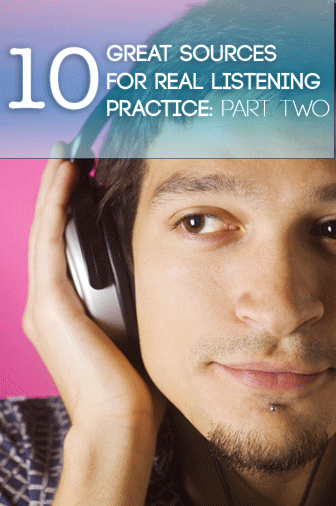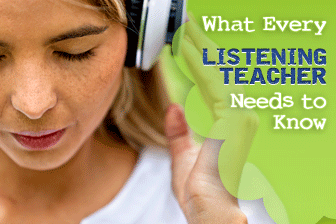10 Great Sources for Real Listening Practice: Part Two


Of reading, writing, listening and speaking, listening can be the most challenging aspect of English for your students. Without adequate listening skills, even when your students are comfortable speaking, they may not choose responses appropriate to the context. They may miss essential information in a business or educational setting. They could misinterpret what others say to them, which can lead to any number of unfortunate situations. For this reason and many more, ESL teachers need to be intentional about teaching their students listening skills, but you do not have to face those waters alone. Here are some articles compiled specifically to help you help your students improve their listening skills.

Materials manufactured just for ESL classes are great. They are simple and straightforward, and our students can understand them. The problem with these materials is they often do not prepare your students for the real situations they will encounter with native speakers. This article offers some practical suggestions on how to integrate real aural materials into your ESL class in a way that will benefit your students.
Not sure where to start looking for real listening materials for your class? Here you will find suggestions for listening material to challenge your students and improve their overall listening skills while still keeping them interested.
A continuation from the list started in part one, this article offers more suggestions on materials you can easily integrate into your listening class.
You have made the effort, found listening materials that are real and will challenge your students. Now what? This article will take you step by step through introducing your listening material and using it with your students.
Do you have to be a native speaker of English to teach ESL? How does your accent influence your students’ abilities to learn proper English pronunciation and speaking patterns? After reading this article, share your opinion on whether or not ESL teachers should be native speakers.
Do you have some great tunes you cannot wait to share with your ESL class? Do you know a guest speaker who will come and share a live performance with your class? Here are five things you can do with your students as you build a lesson around the perfect song. On additional note, this is a great way to incorporate holiday songs into your classroom.
Are you looking for a way to bring regular listening practice into your classroom? Why not try using a television series for continuing practice with listening skills? Here are some ideas on how to integrate a television series into your ESL classroom.
Using movies in reading class can be a great way to make class more communicative, but what about using movies in a listening class? These tips can be applied to your listening class even when the novel is not part of the curriculum.
Share it below; we would all love to hear about it.